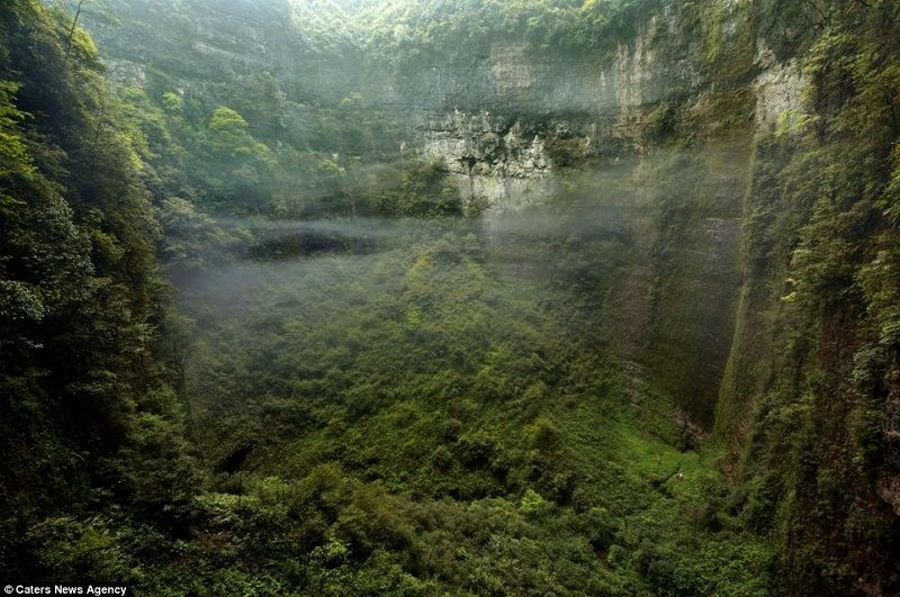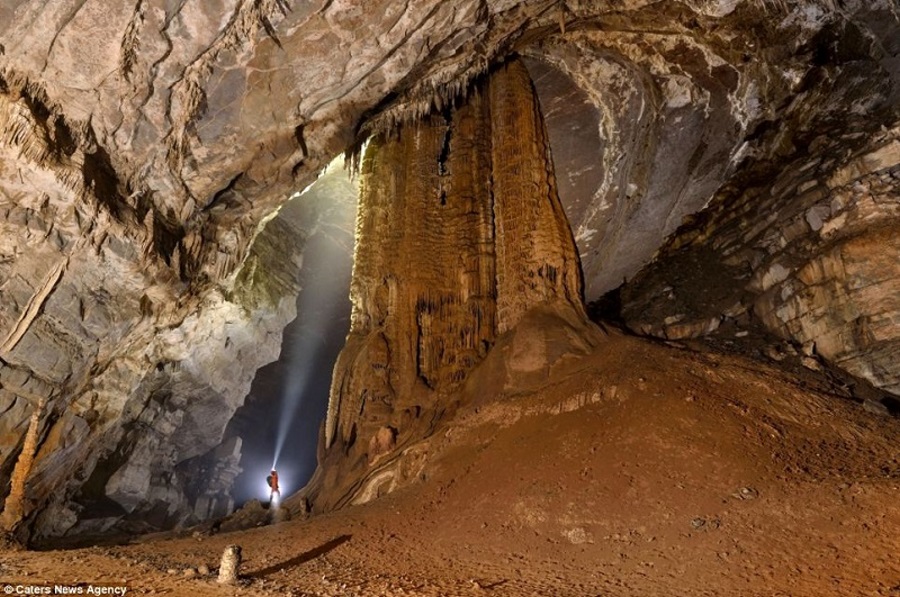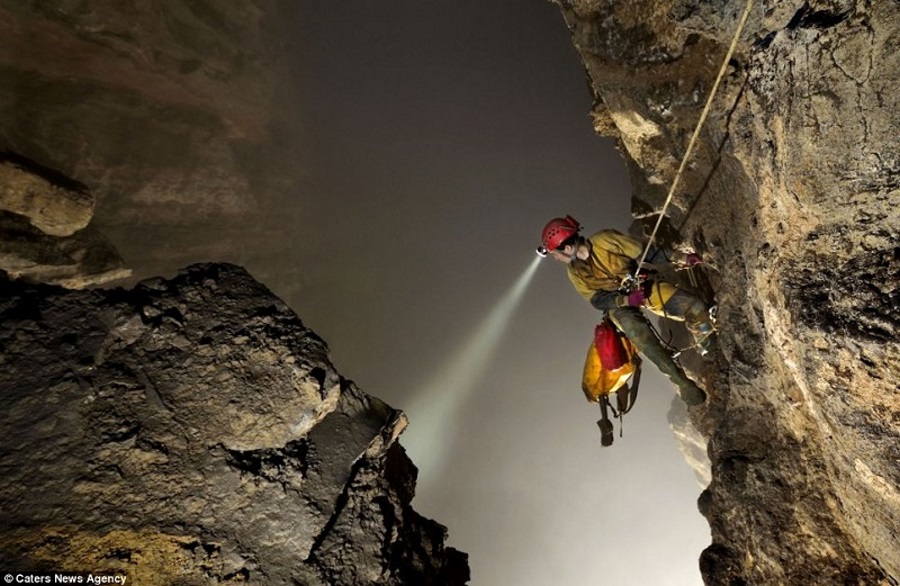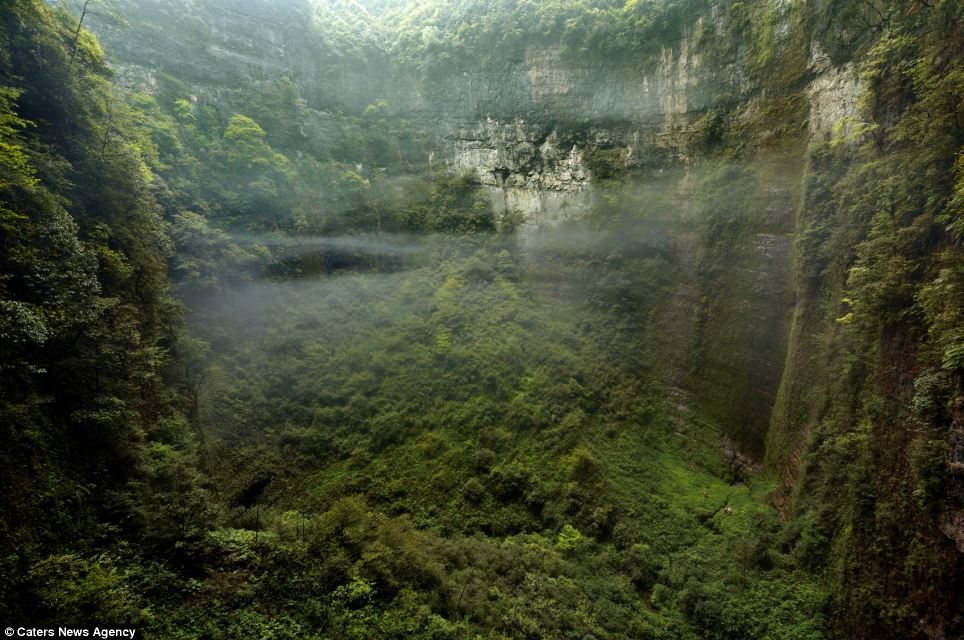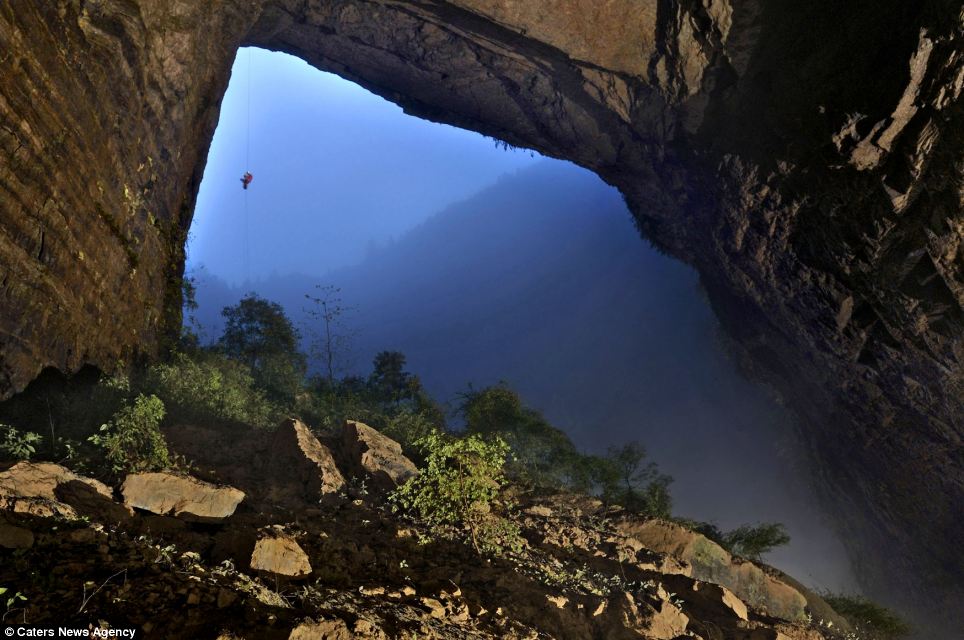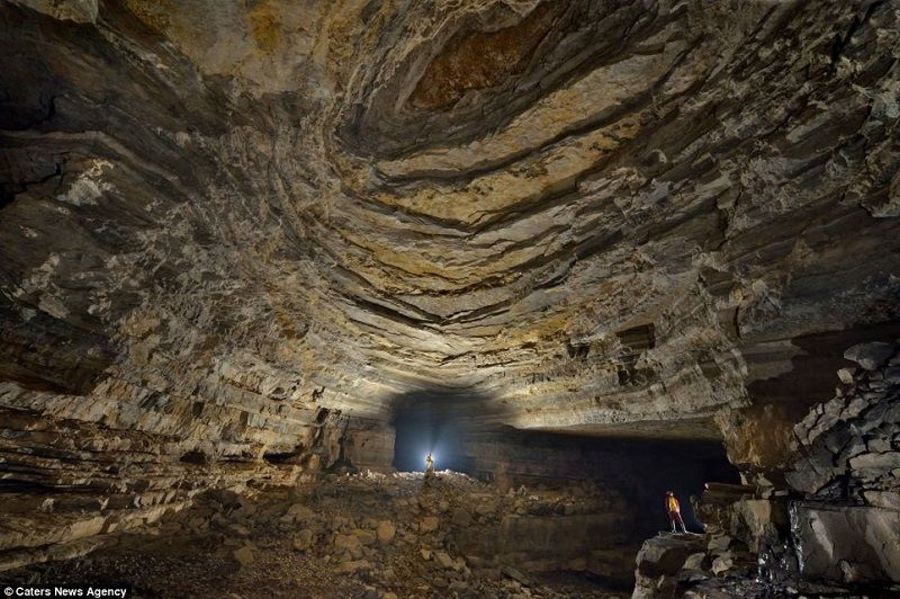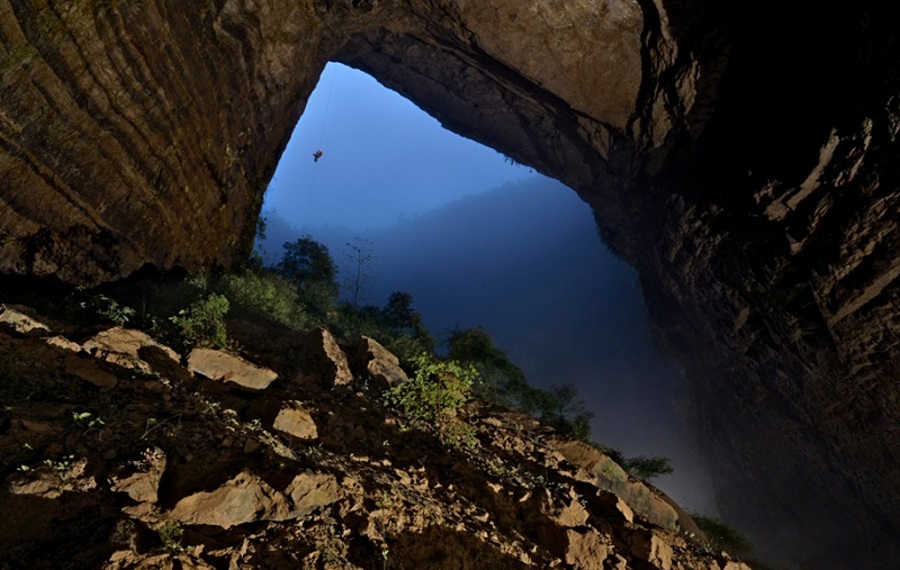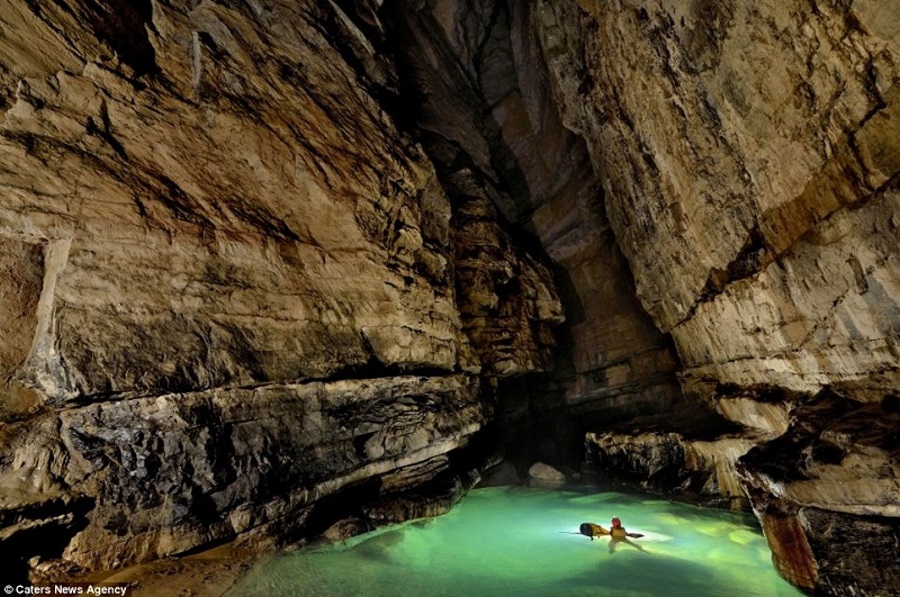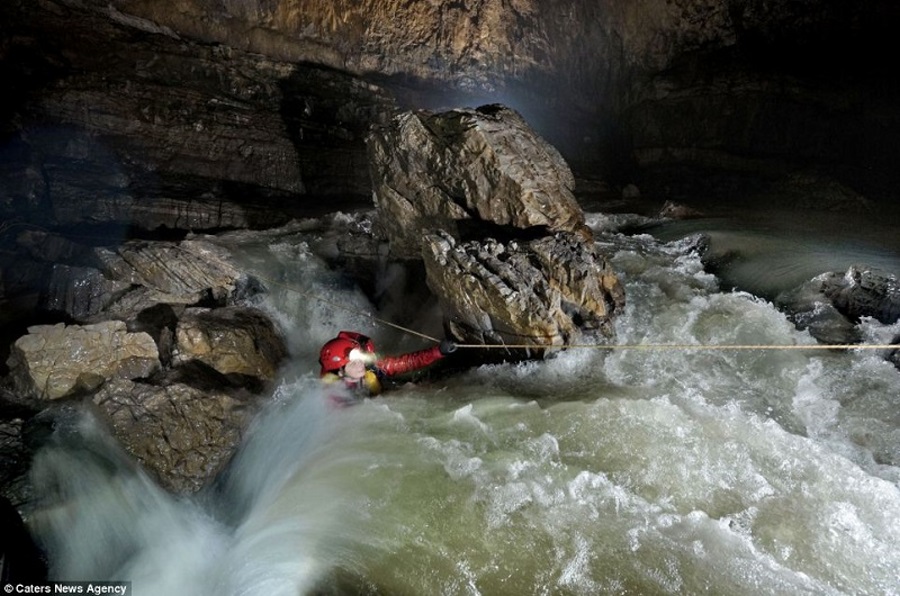|
'Supercave' In China Takes Title As World's Largest Cavern, And The Photo Is Pretty Unreal
The Huffington Post | By Jacqueline Howard
Posted: 09/29/2014 2:08 pm EDT Updated: 09/30/2014 10:59 am EDT
It's
hidden beneath rolling hills, can be reached only via an underground
stream, and now it has been named the world's biggest cave chamber: meet
Miao Room.
A photographer’s lights illuminate the green-hued Getu He
river in the Miao Room -- now ?considered the world’s largest cave
chamber by volume. The Miao Room volume measurement exceeds Sarawak
Chamber in Malaysia, the past title-holder, by about 10 percent. Credit:
© Carsten Peter/National Geographic News
 Photo Credit: National Geographic
Photo Credit: National Geographic
Yes,
a new measurement of China's vast Miao Room cavern shows that the cave
chamber encompasses some 380.7 million cubic feet (10.78 million cubic
meters). That beats out the past title-holder, Sarawak Chamber in
Malaysia. However, the Malaysian cave chamber is still the world's
largest by surface area (around 1.66 million square feet).
"To me
this is like discovering that K2 is larger than Everest," Tim Allen, an
expedition co-leader who studied the Chinese cave, told National
Geographic. He was referring to K2, the Himalayan peak that is taller
than all other mountains on Earth except Everest.
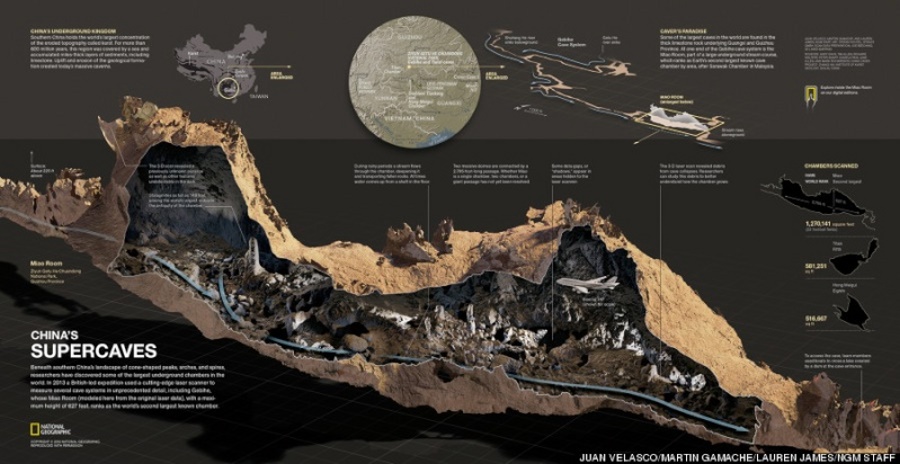
Beneath
southern China’s landscape of cone-shaped peaks, arches, and spires,
researchers have discovered some of the world's largest underground
chambers. In 2013 a British-led expedition used a laser scanner to
measure several cave systems in unprecedented detail, including Gebihe,
whose Miao Room (modeled here from the original laser data), with a
maximum height of 627 feet. Click on the photo above for a closer look
at the map. Art Credit: Stefan Fichtel, Ixtract Gmbh. Scan Data
Preparation: Joe Beeching
The Miao Room chamber, which is found
within the Gebihe cave system at China's Ziyun Getu He Chuandong
National Park, was first mapped with laser scanning surveys in 2013,
National Geographic reported. Then researchers reprocessed those scans
with help from scientists at the University of Lancaster in the U.K. to
determine the volume and size of the Miao Room.
The measurements were announced at the Hidden Earth 2014 national caving conference, held in England from September 26-28.
More photos of China's supercaves are available on National Geographic Magazine
SOURCE: 'Supercave' In China Takes Title As World's Largest Cavern, And The Photo Is Pretty Unreal
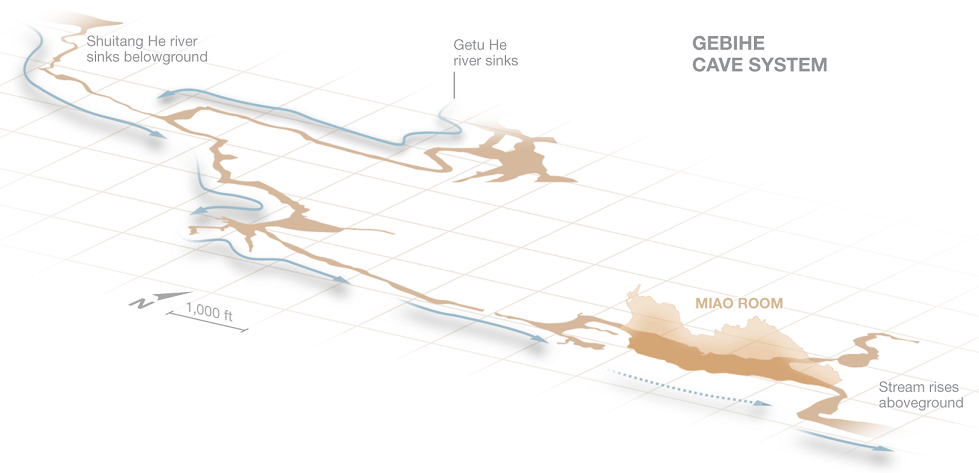 A schematic representation of the Miao Room within the Gebihe cave system - Wikipedia
A schematic representation of the Miao Room within the Gebihe cave system - Wikipedia
Miao Room
Miao Room is the largest known cave
chamber by volume in the world. It is a part of the Gebihe cave system,
which is located in Ziyun Getu He National Park, in Ziyun county of the
Chinese province of Guizhou. The chamber, discovered by a French
expedition called Gebihe'89 in 1989, measures 852 metres (2,795 ft) in
length, 191 metres (627 ft) in width, has an area of 154,500 square
metres (1,663,000 sq ft) and a volume of 10,780,000 cubic metres
(381,000,000 cu ft). In 2013 members of a British led expedition
measured the chamber using 3-D laser scanners.
Geology and formation
For more than 600 million years the area, in
which the Gebihe cave system is located, was covered by sea and during
this time it accumulated miles-thick layers of sediments, including
limestone. The uplift of the area and then the erosion of the limestone
layer created today's massive cavern system.
The system spreads out in limestones and dolomite of
Carboniferous and Permian age. Old cave levels have been cut by erosion
and follow the base level lowering caused by Tertiary uplift.
SOURCE: Wikipedia
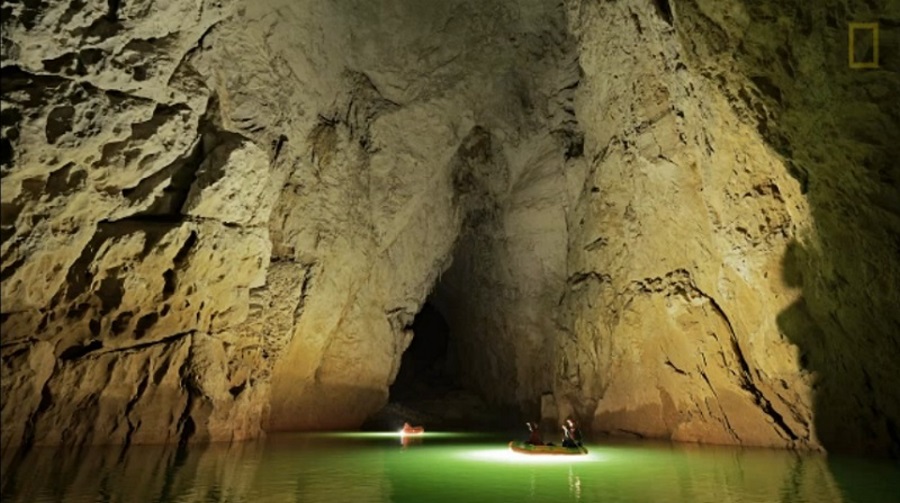
The cave known
as the “Miao Room” has been the most talked about supercave online this
year. What classifies it as a supercave you may ask? Well, to put it
into perspective, the cave chamber is nine times the size of Houston’s
astrodome. - Source
|
The Colossal Er Wang Dong Cave System
Seems every time someone says that they find a bigger one. Seems
there is a little confusion on the net between Son Doong Cave in
Vietnam and Er Wang Dong Cave in Chongquing province of China
In fact some images look the same?
Er Wang Dong
The cave so huge it has its own weather system: Explorers discover a lost world with thick cloud and fogs trapped inside. The cave system was discovered in the Chongquing province of China by a team of cavers and photographers. Caver
Robbie Shone, from Manchester, said a few of the caves had previously
been used by nitrate miners but had not been properly explored. The
network, which includes 'cloud Ladder Hall' measuring around 51,000
metres squared, has water sources and vegetation of the floor - By SARAH GRIFFITHS
Adventurers
have stumbled across a cave so enormous that it has its own weather
system, complete with wispy clouds and lingering fog inside vast
caverns. A team of expert cavers and photographers have been exploring the vast cave system in the
Chongquing province of China and have taken the first-ever photographs of the natural wonder. They
were amazed to discover the entrance to the hidden Er Wang Dong cave
system and were stunned when they managed to climb inside to see a space
so large that it can contain a cloud.
The
view from a small window in the wall of the vast Niubizi Tian Keng in
the Er Wang Dong cave system, where clouds form inside the huge spaces.
Three tiny explorers can be seen negotiating the heavily vegetated floor
This opening looked the same as the Son Doong cave but on closer look
the trees in back are different and the depth is different
An
intrepid cave explorer ascends a rope hanging from the Niubizi Tian
Keng. This photograph is one of the first-ever images taken of one of a
cave so large it has its own weather system
Lots more images of both I will post more
SOURCE: The cave so huge it has its own weather system: Explorers discover a lost world with thick cloud and fogs trapped inside - The Daily Mail
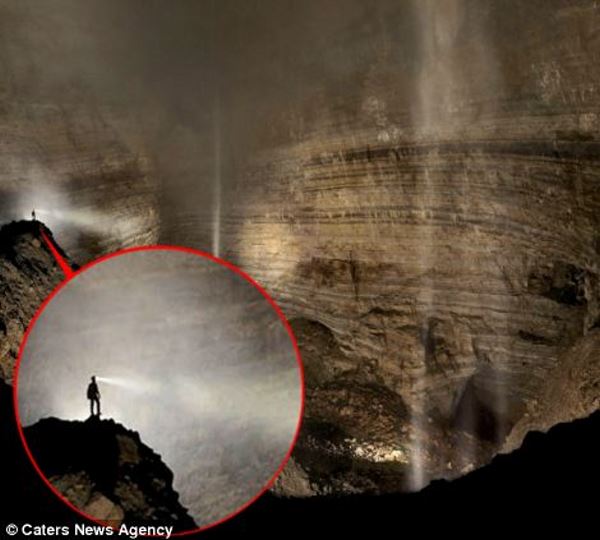
Er Wang Dong (Chinese; literally: "Second Royal Cave") is a
large cave in the Wulong Karst region, in Wulong County of Chongqing
Municipality of China.
Current known length of its
passages is 42,139 metres (138,251 ft) with a maximum depth of 441 m
(1,447 ft). It is large enough to contain its own weather system. The
cave starts in the 195 m (640 ft) deep Niubizi tiankeng ( "ox nose
sinkhole") and also contains the 295 m (968 ft) deep Qingkou tiankeng.
Er
Wang Dong cave has formed in Lower Ordovician limestone and is located
close to another very large cave system - San Wang Dong.
Both
caves were explored by Hong Meigui Cave Exploration Society. Local
people make weather forecast based on the observations in Niubizi
tiankeng - if there is a fog coming from the cave, rain is expected.
Er_Wang_Dong - Wikipedia
|
The Colossal Er Wang Dong Cave System
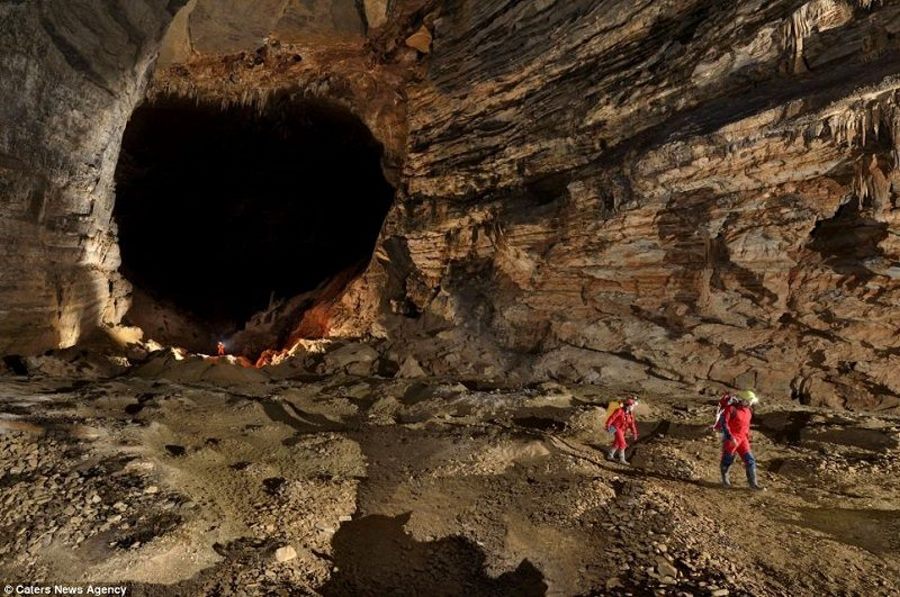
Source: Above Top Secret
The Er Wang Dong cave system is huge. Really, really huge. And until
recently, the massive system of caves had yet to be discovered. A group
of expert cavers and professional photographers recently explored the Er
Wang Dong cave system for the first time during a month-long expedition
to the Chongquing province in China. Located near the rural village
Ranjiagou, one can enter the huge, complex cave system by walking,
swimming or abseiling into the caves.
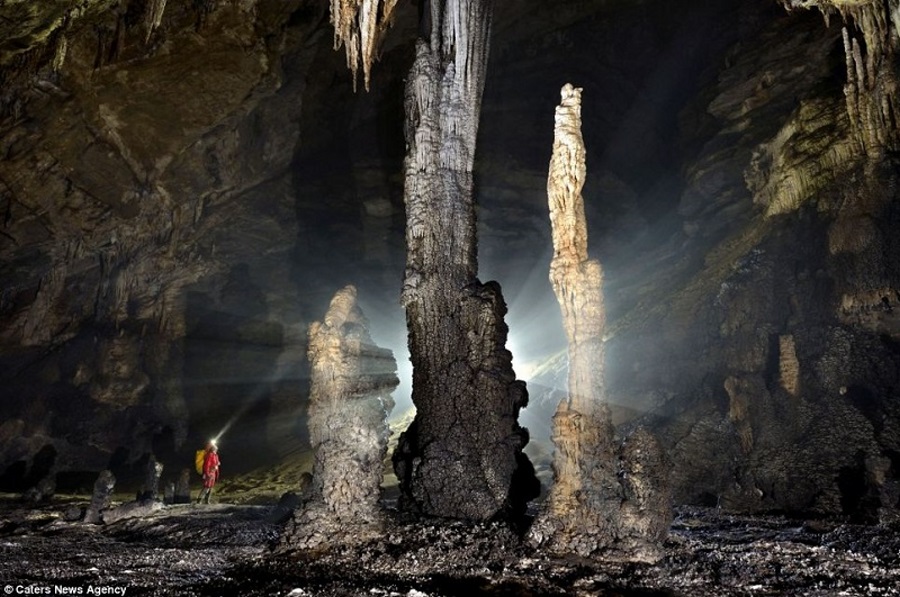
Source: The Daily Mail
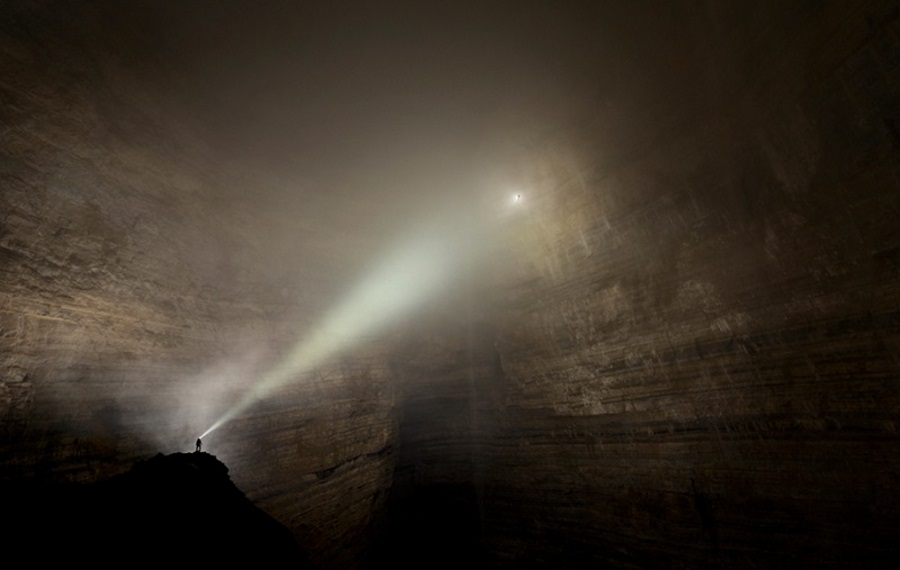
Source: Shone Photography
While some of the surface-level caves have been used by nitrate
miners in the past, the 15-person crew discovered many new caves that
had never before seen the light of day. The cavers were particularly
excited to discover that some of the caves were so massive that they
contained their own weather systems, complete with wispy clouds and
thick fog. The clouds occur within the caves when humidity rises into
the cavern’s colder air.
|
